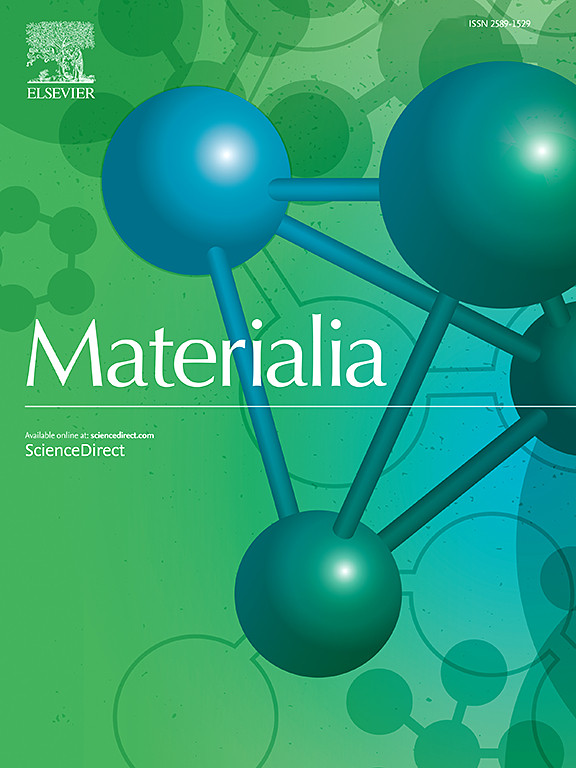Liquid metal/boron nitride thermal grease with optimized thermal conductivity and non-corrosive properties through interfacial modification
IF 3
Q2 MATERIALS SCIENCE, MULTIDISCIPLINARY
引用次数: 0
Abstract
With the rise of electronic technologies, chip heat dissipation has become a critical challenge, spurring the need for advanced thermal interface materials. In this study, we developed a novel composite material by integrating boron nitride (BN) with liquid metal (LM) through surface modification using polyvinylpyrrolidone (PVP) and silane coupling agent (KH590). This modification enables the effective attachment of BN to the LM surface, forming a continuous thermal channel. When combined with polydimethylsiloxane (PDMS), KLM/BN@PVP/PDMS composite achieves a high thermal conductivity of 1.5 W/(m·K) and a low interfacial thermal resistance of 0.001565 (m2·K)/W. Importantly, the incorporation of BN not only reduces the fluidity of LM but also prevents LM from corroding aluminum substrates, ensuring the material's safety and stability. This innovative composite offers a promising solution to the heat dissipation challenges faced by electronic devices such as CPUs, GPUs, and LEDs, making it highly valuable for practical applications.

液态金属/氮化硼导热润滑脂,通过界面改性,具有优化的导热性能和无腐蚀性
随着电子技术的兴起,芯片散热已成为一个关键的挑战,刺激了对先进热界面材料的需求。本研究采用聚乙烯吡咯烷酮(PVP)和硅烷偶联剂(KH590)对氮化硼(BN)与液态金属(LM)进行表面改性,制备了一种新型的氮化硼(BN)与液态金属(LM)复合材料。这种改性使BN有效附着在LM表面,形成连续的热通道。当与聚二甲基硅氧烷(PDMS)结合时,KLM/BN@PVP/PDMS复合材料具有1.5 W/(m·K)的高导热系数和0.001565 (m2·K)/W的低界面热阻。重要的是,BN的加入不仅降低了LM的流动性,还防止了LM对铝基板的腐蚀,保证了材料的安全性和稳定性。这种创新的复合材料为电子设备(如cpu, gpu和led)面临的散热挑战提供了一个有希望的解决方案,使其在实际应用中具有很高的价值。
本文章由计算机程序翻译,如有差异,请以英文原文为准。
求助全文
约1分钟内获得全文
求助全文
来源期刊

Materialia
MATERIALS SCIENCE, MULTIDISCIPLINARY-
CiteScore
6.40
自引率
2.90%
发文量
345
审稿时长
36 days
期刊介绍:
Materialia is a multidisciplinary journal of materials science and engineering that publishes original peer-reviewed research articles. Articles in Materialia advance the understanding of the relationship between processing, structure, property, and function of materials.
Materialia publishes full-length research articles, review articles, and letters (short communications). In addition to receiving direct submissions, Materialia also accepts transfers from Acta Materialia, Inc. partner journals. Materialia offers authors the choice to publish on an open access model (with author fee), or on a subscription model (with no author fee).
 求助内容:
求助内容: 应助结果提醒方式:
应助结果提醒方式:


